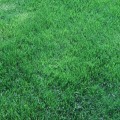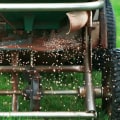For beginners venturing into the world of lawn care, understanding the basics is crucial to ensuring a lush, healthy lawn. First and foremost, it's important to familiarize oneself with the type of grass present in the lawn, as different types have varying needs in terms of sunlight, water, and temperature tolerance. Knowing your grass type will guide you in making informed decisions about watering schedules, mowing heights, and the types of fertilizer or weed control products that are best suited for your lawn. Regular watering is essential, especially during dry spells, but it's equally important not to overwater. Overwatering can lead to shallow root systems and may increase the susceptibility of your lawn to pests and diseases. As a rule of thumb, lawns typically require about an inch of water per week, either from rainfall or supplemental watering.
Mowing is another critical aspect of lawn care; however, cutting your grass too short can stress the grass, making it more prone to disease, pests, and drought damage. Keeping your mower blades sharp and setting them to the right height—usually between 2.5 to 3 inches—will encourage healthy growth and deter pests. Furthermore, leaving grass clippings on the lawn can provide additional nutrients, acting as a natural fertilizer.
Speaking of fertilization, applying the right fertilizer at the right time is key to promoting vigorous lawn growth. Beginners should opt for a slow-release, balanced fertilizer that provides nutrients steadily over time. It's also advisable to conduct a soil test before fertilizing to determine the specific nutrient needs of your soil. Weed control is another aspect to manage carefully; selecting the appropriate herbicide and applying it correctly can prevent damage to your lawn and ensure that nutrients are not being diverted away from your grass.
Aeration is a process often overlooked by beginners but is essential for maintaining a healthy lawn. Aerating your lawn once a year helps relieve soil compaction, allowing water, air, and nutrients to penetrate deeper into the soil and reach the roots of your grass. This process can significantly improve the health and appearance of your lawn over time.
While taking care of your lawn, you might encounter unexpected challenges, such as wildlife or pest issues. For example, dealing with bat removal could become necessary if bats decide to roost in nearby structures. It's important to handle such situations legally and humanely, as bats are protected by law in many areas due to their role in the ecosystem as pollinators and insect controllers. Should you need to address bat removal, consulting with professionals who specialize in wildlife management is the best course of action, ensuring that your lawn care practices do not negatively impact local wildlife.
In conclusion, taking care of a lawn as a beginner involves learning about and managing various aspects, from watering and mowing to fertilization and weed control, all while being mindful of the environment and local wildlife, including how to address issues like bat removal responsibly. With patience, persistence, and a willingness to learn, even novices can cultivate a thriving, vibrant lawn that enhances their outdoor living space and contributes positively to the local ecosystem.






